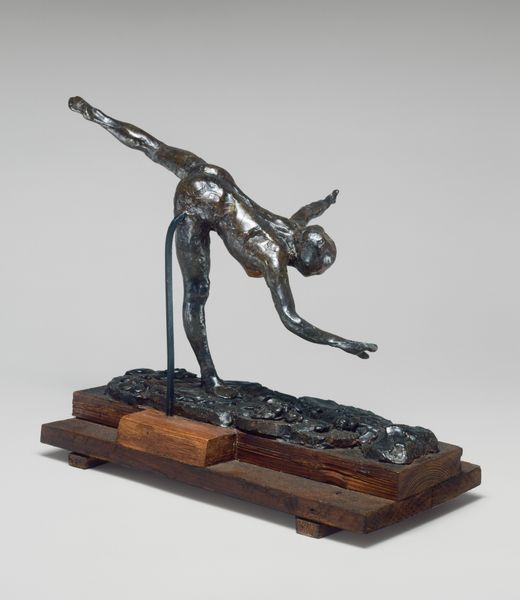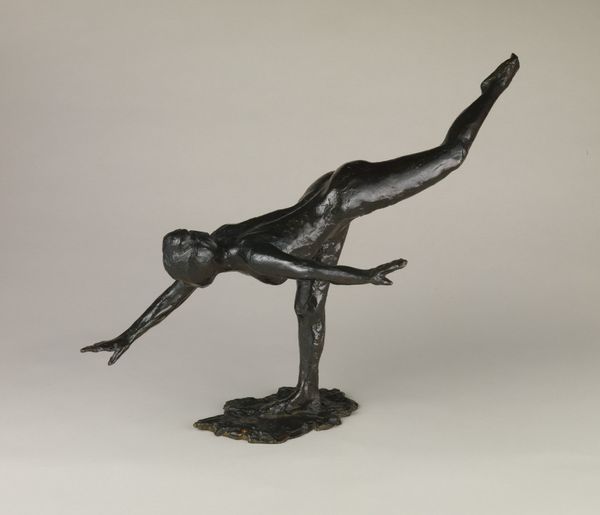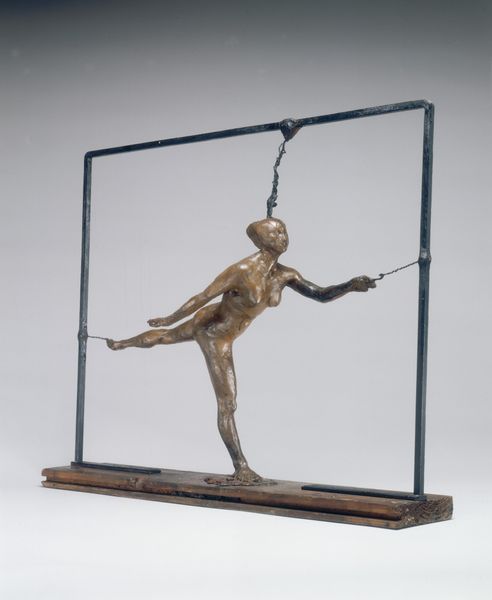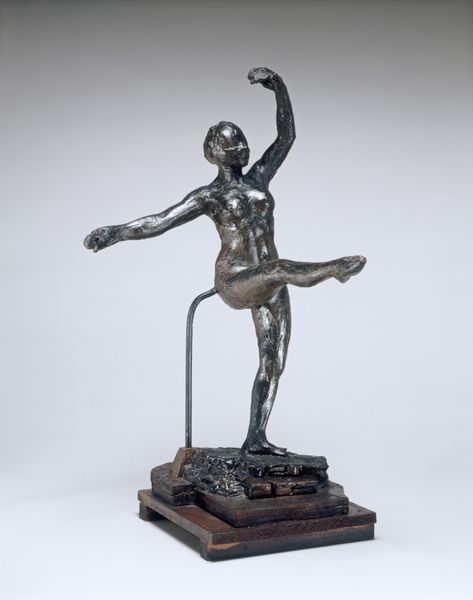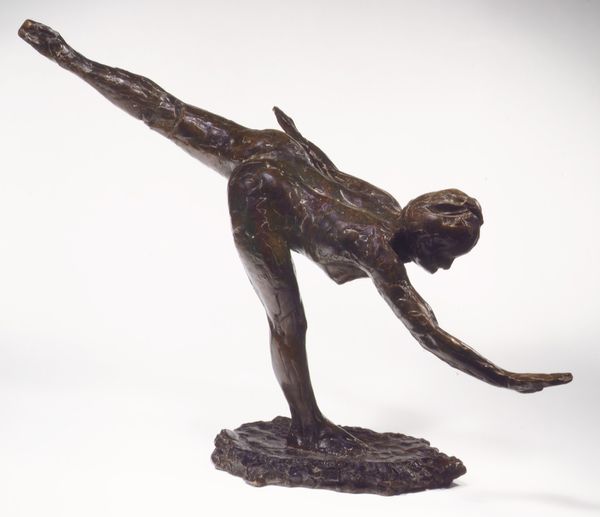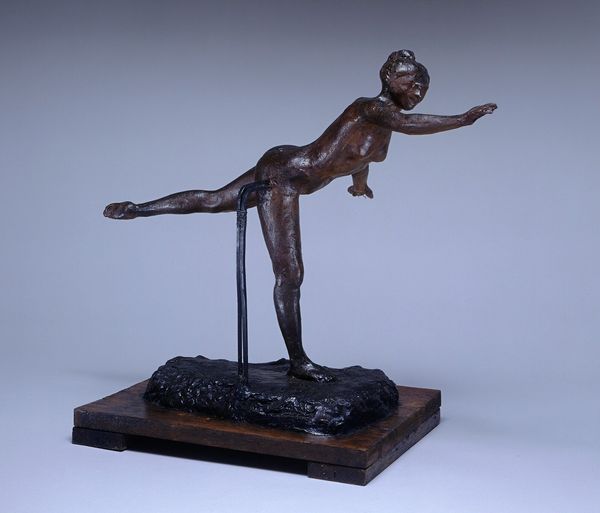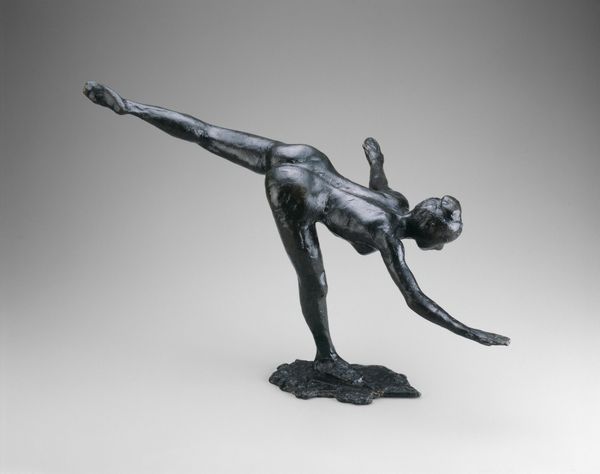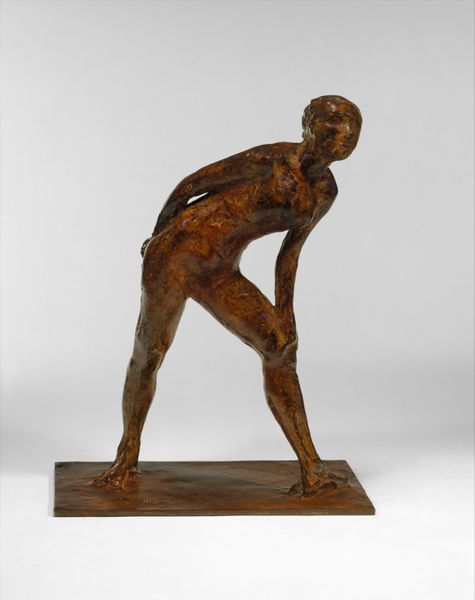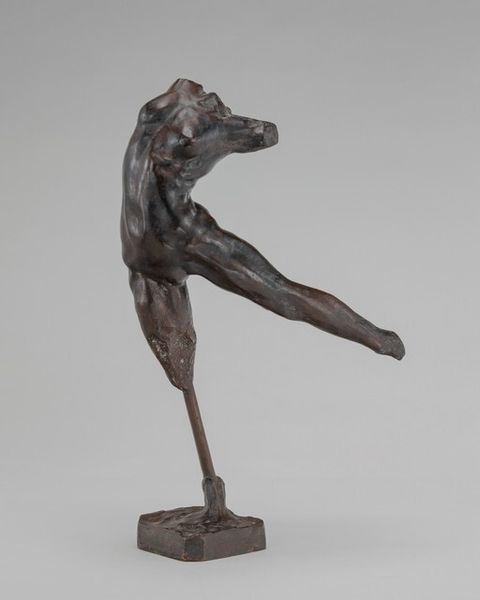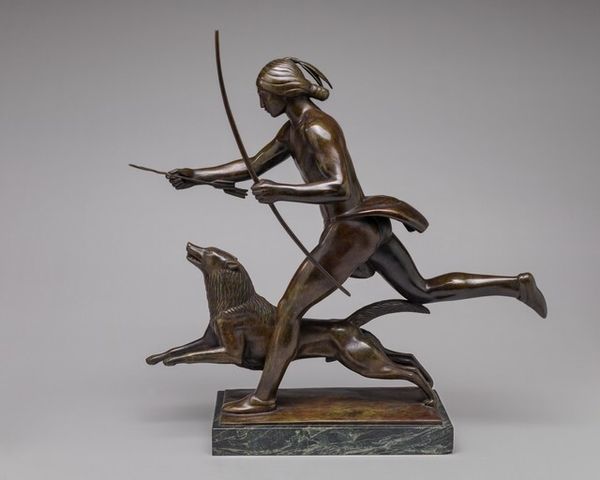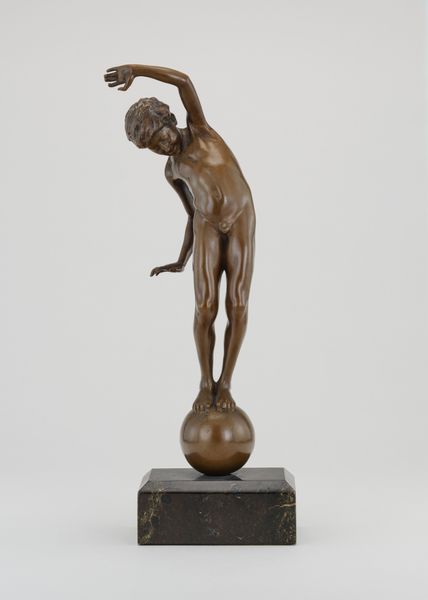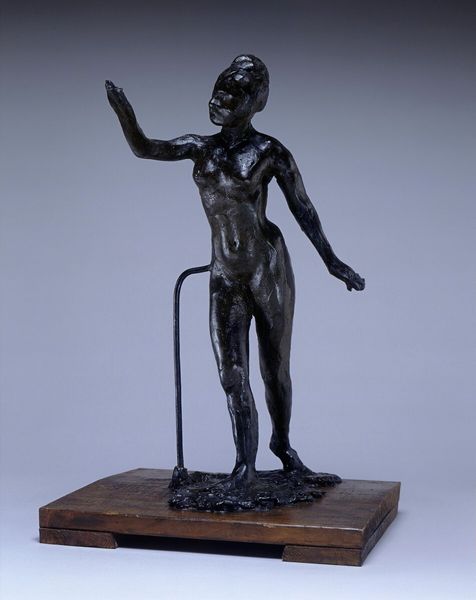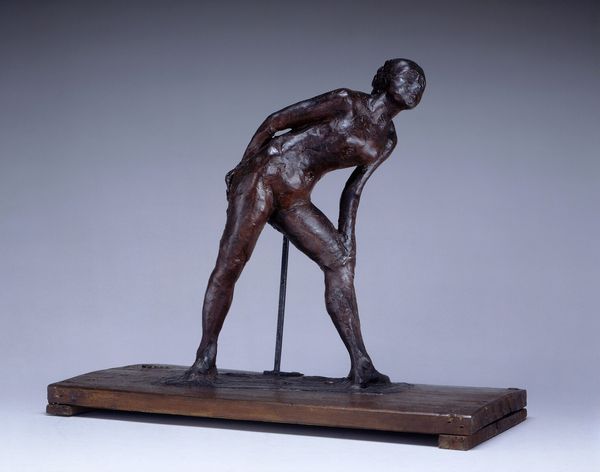
Grande Arabesque, Third Time (First Arabesque Penchée) c. 1885 - 1890
0:00
0:00
bronze, impasto, sculpture
#
portrait
#
impressionism
#
sculpture
#
bronze
#
figuration
#
impasto
#
sculpture
#
post-impressionism
#
nude
Dimensions: overall without base: 42 x 31.8 x 55.5 cm (16 9/16 x 12 1/2 x 21 7/8 in.) height (of figure): 40.6 cm (16 in.)
Copyright: National Gallery of Art: CC0 1.0
Edgar Degas created this bronze sculpture, Grande Arabesque, Third Time, sometime between 1860 and 1917. The sculpture captures a ballerina in motion, with her body forming a sweeping curve that embodies both tension and grace. Notice how the dancer's form creates a dynamic interplay of positive and negative space. Her extended leg and arm reach outwards, defining the surrounding air, while her torso and supporting leg anchor the composition. Degas uses the materiality of bronze to emphasize the texture and musculature of the dancer’s body, adding depth and realism to the figure. The rough surface and patinated finish contribute to the sense of movement, as if the dancer is caught in a fleeting moment of performance. Degas' approach to form is rooted in a desire to capture spontaneity and the ephemerality of life. By focusing on the formal qualities of line, shape, and texture, Degas invites us to contemplate the body's expressive potential. He challenges traditional notions of beauty and representation, seeking to reveal the underlying structures that shape our perceptions.
Comments
No comments
Be the first to comment and join the conversation on the ultimate creative platform.
